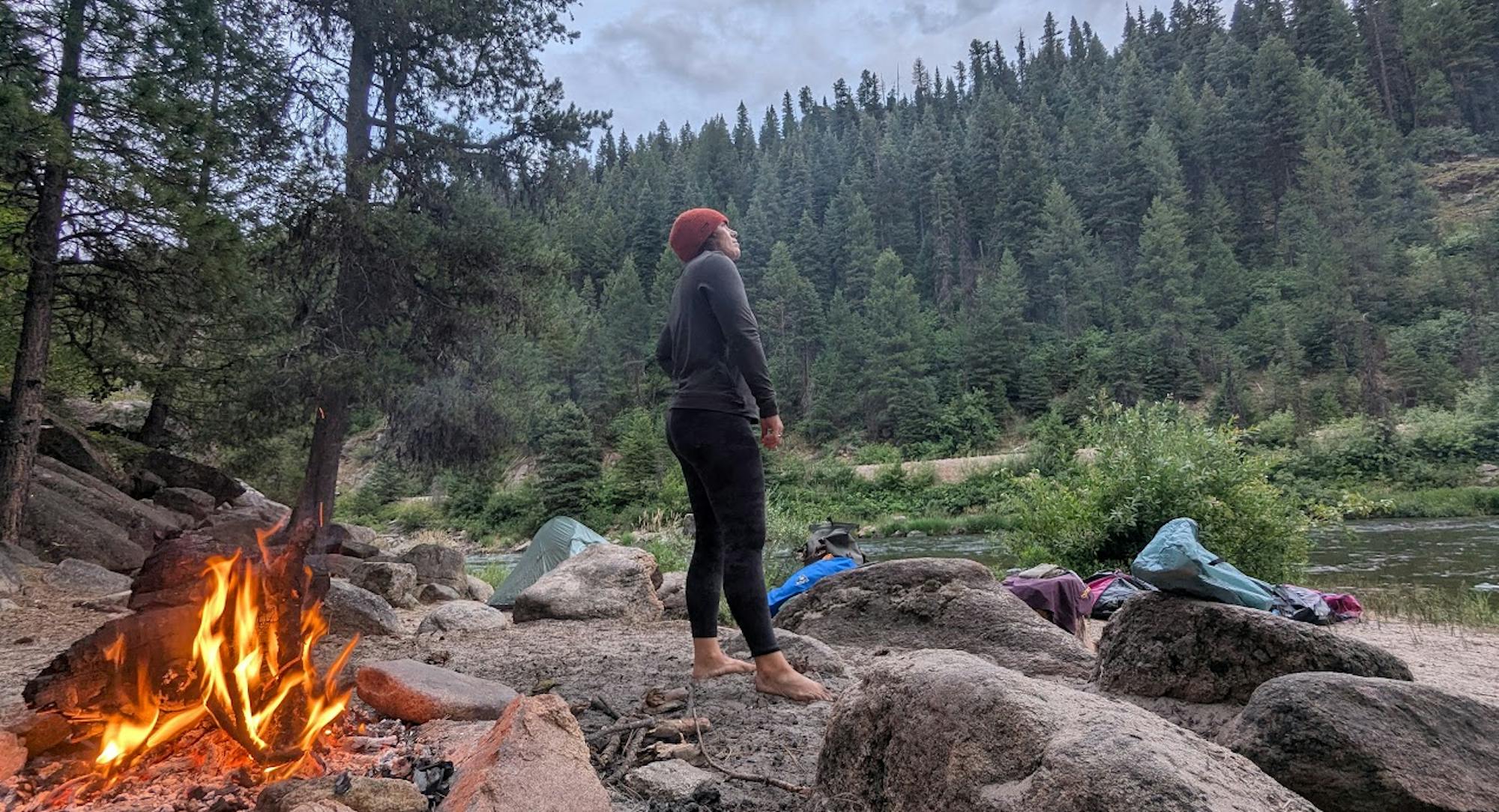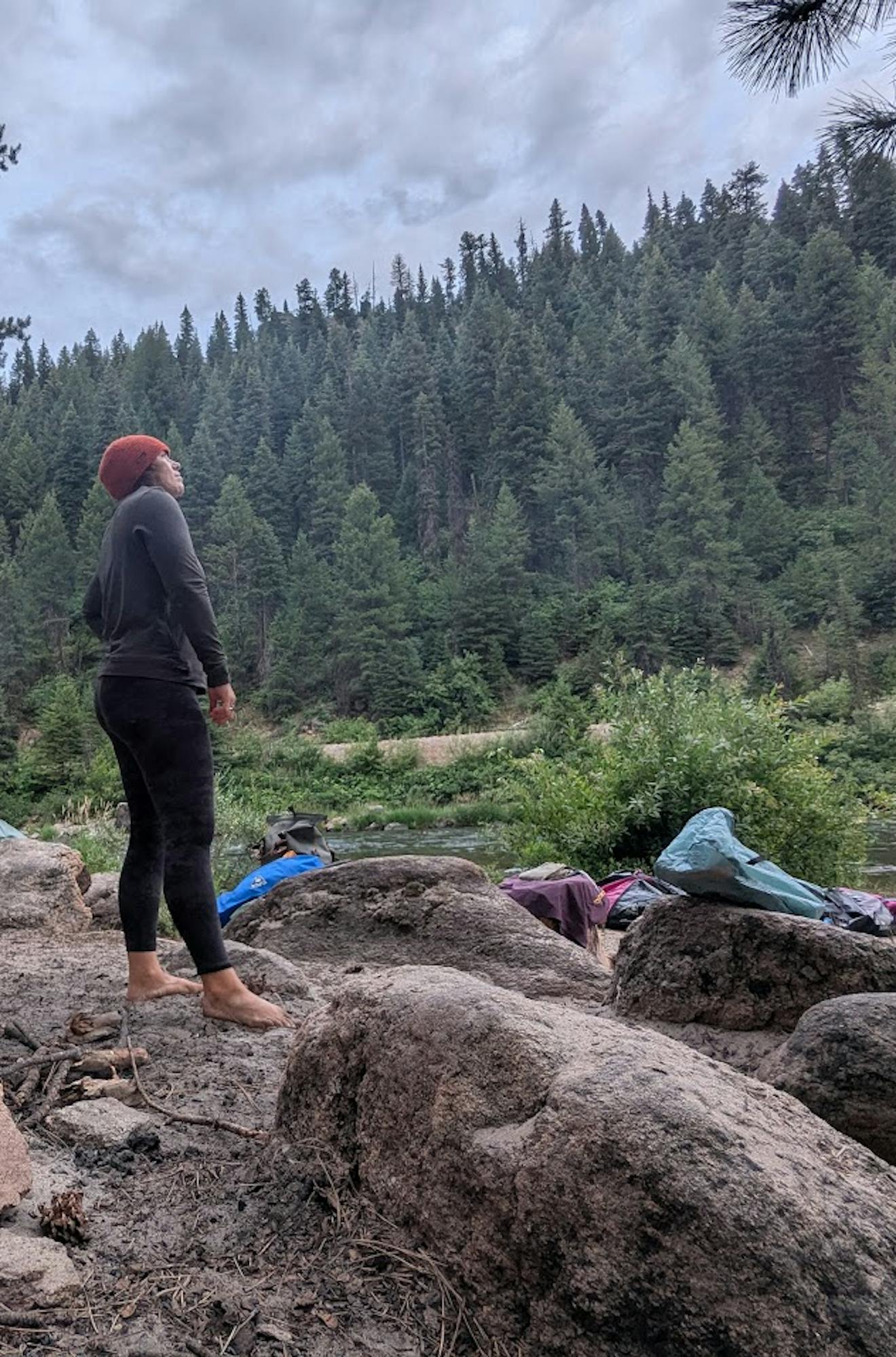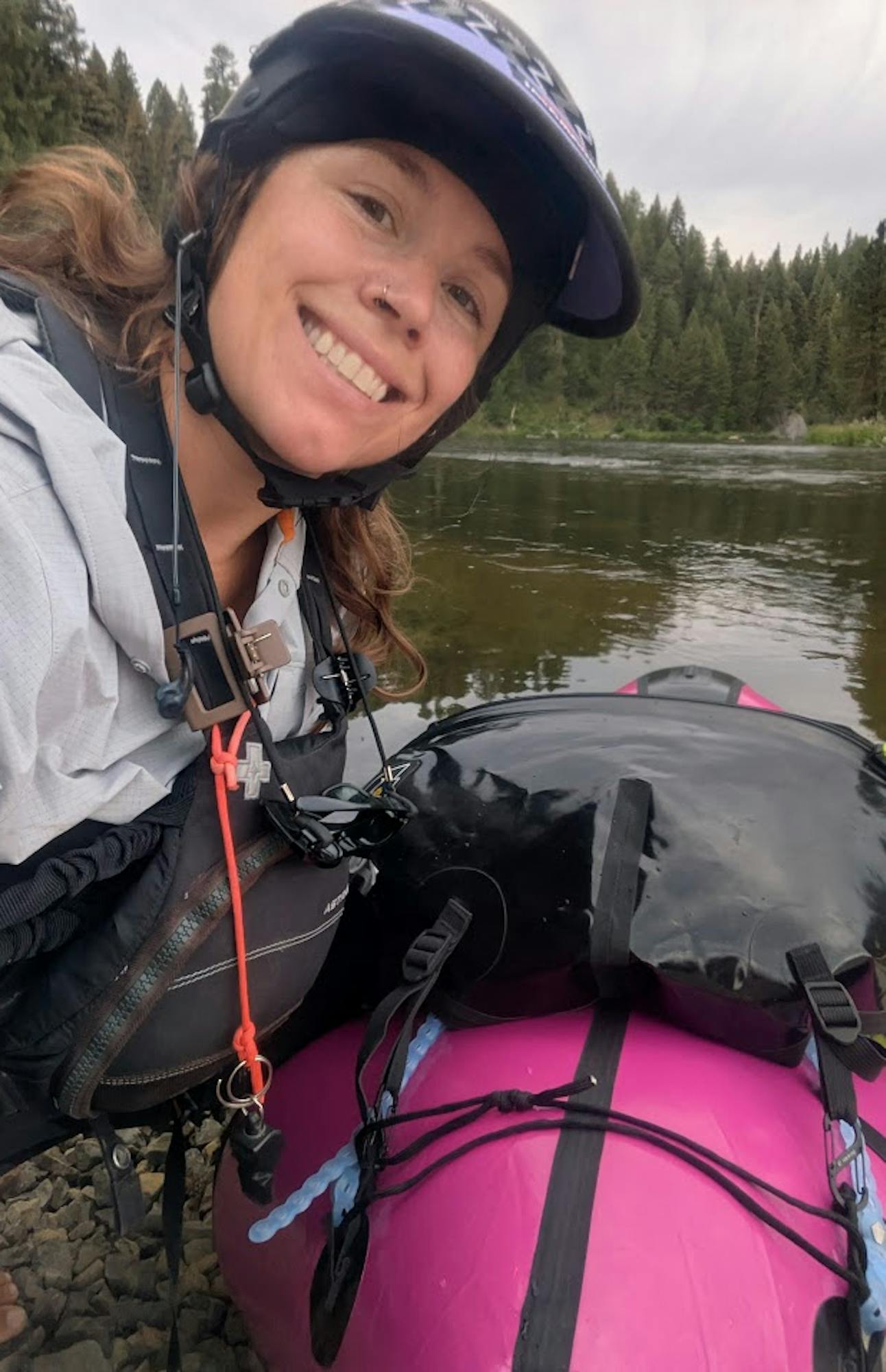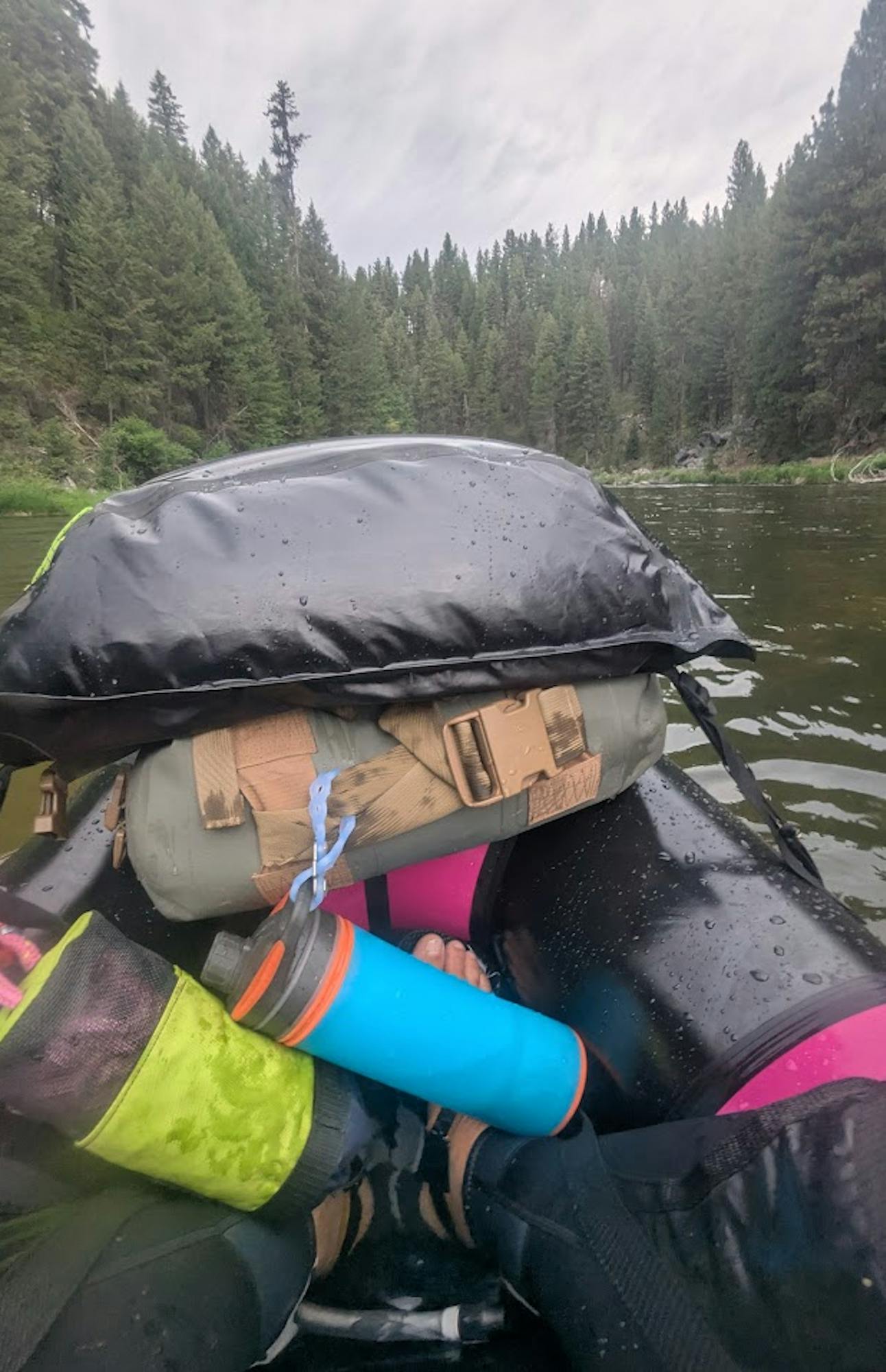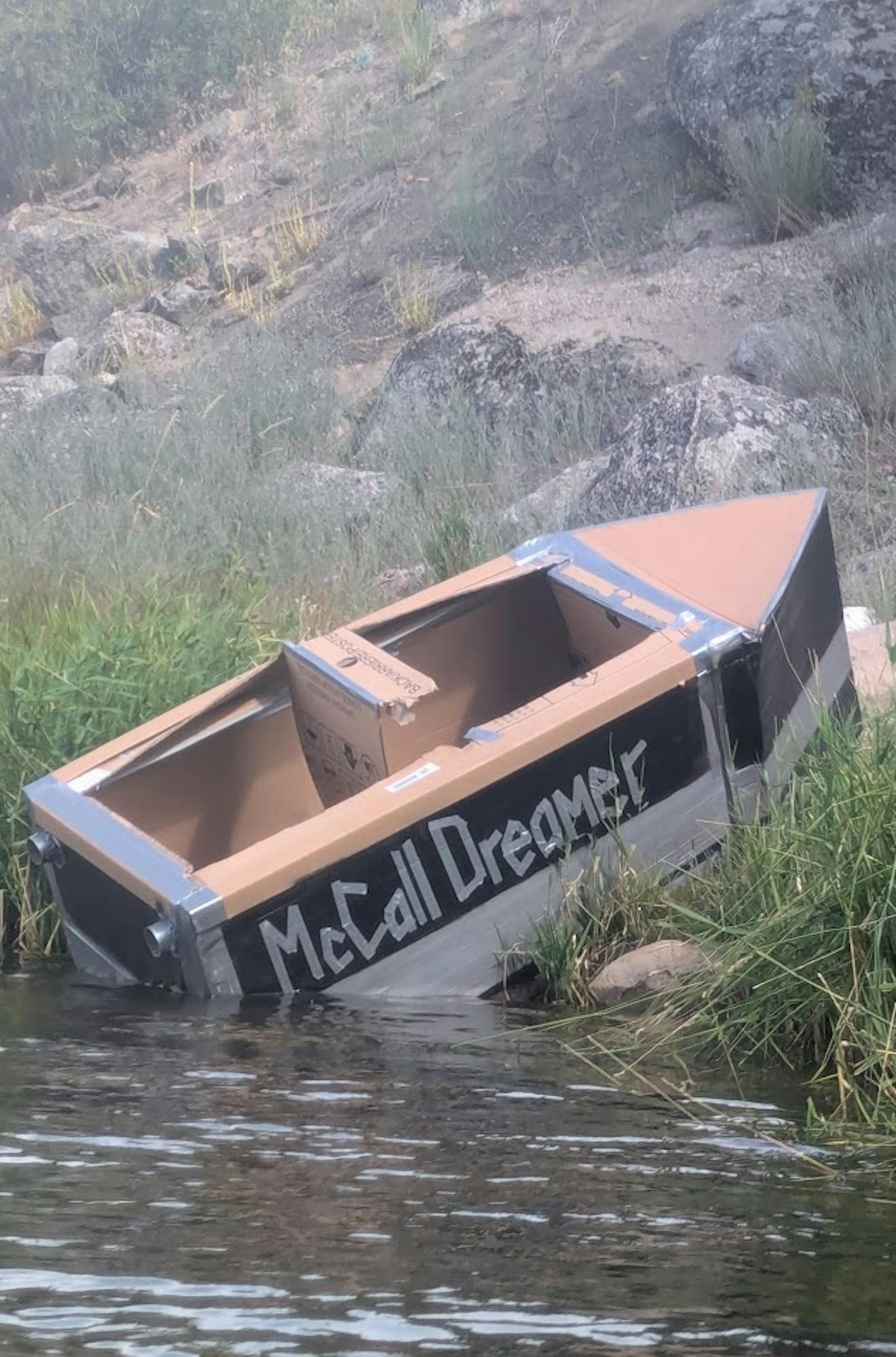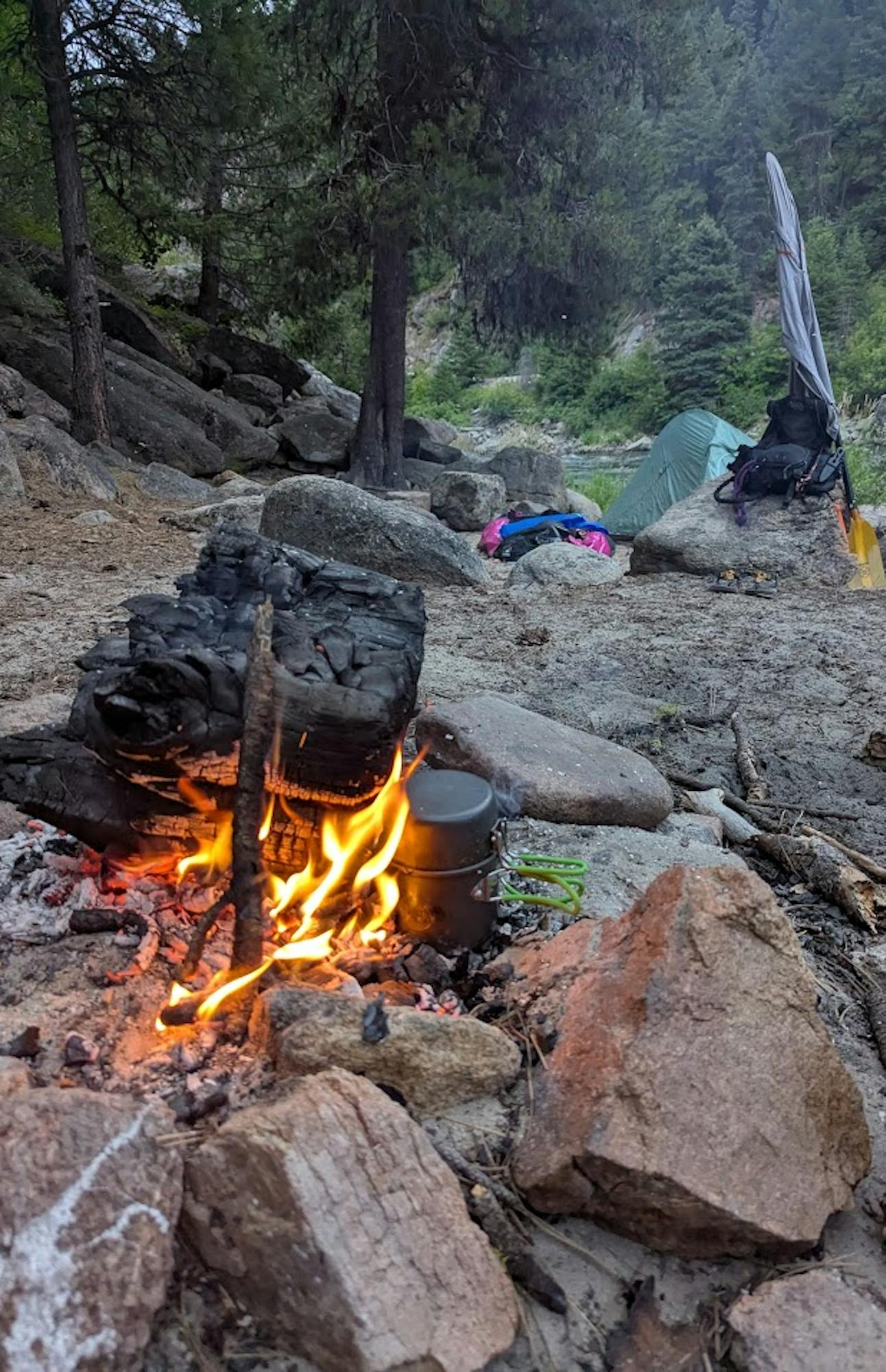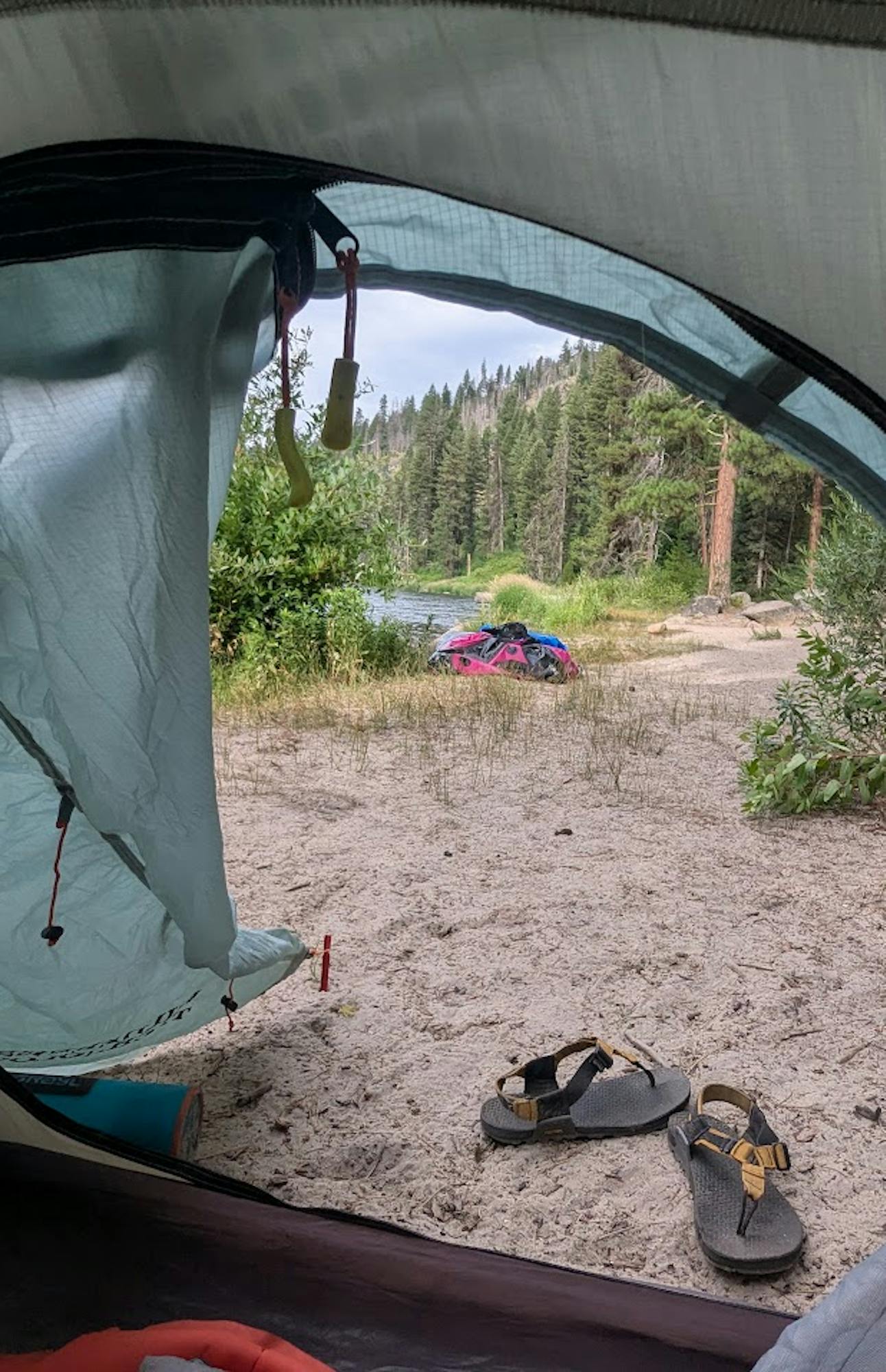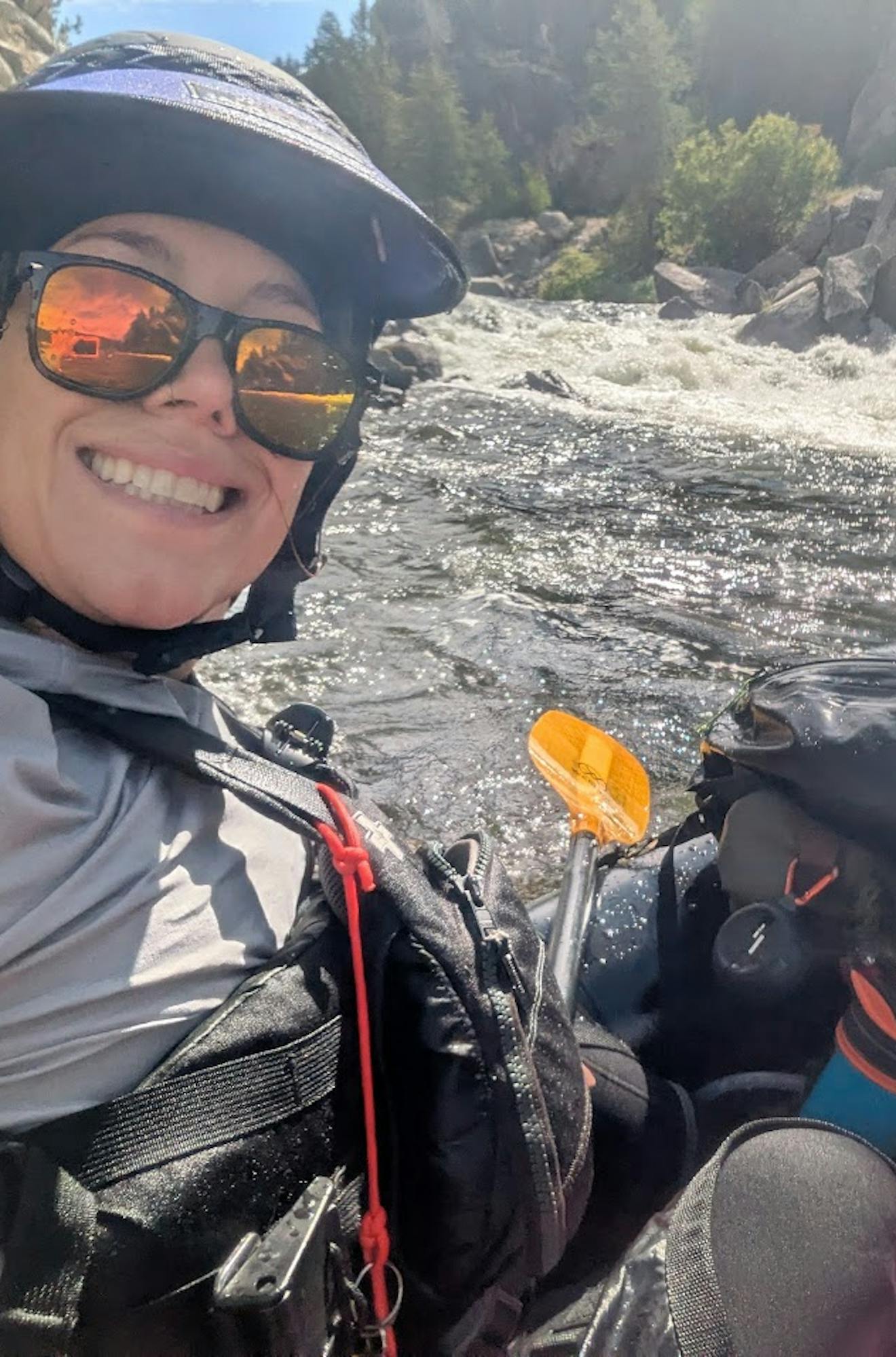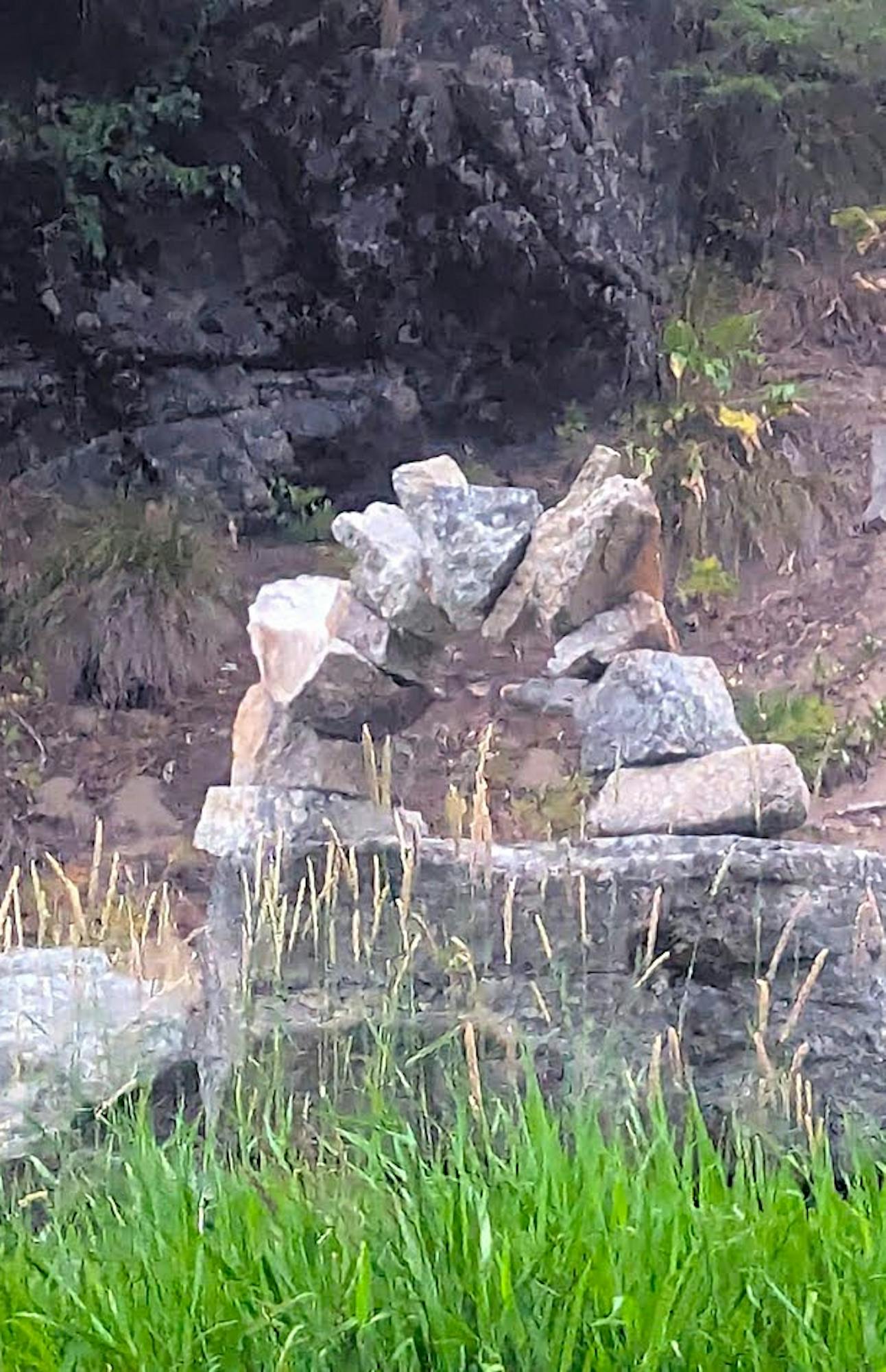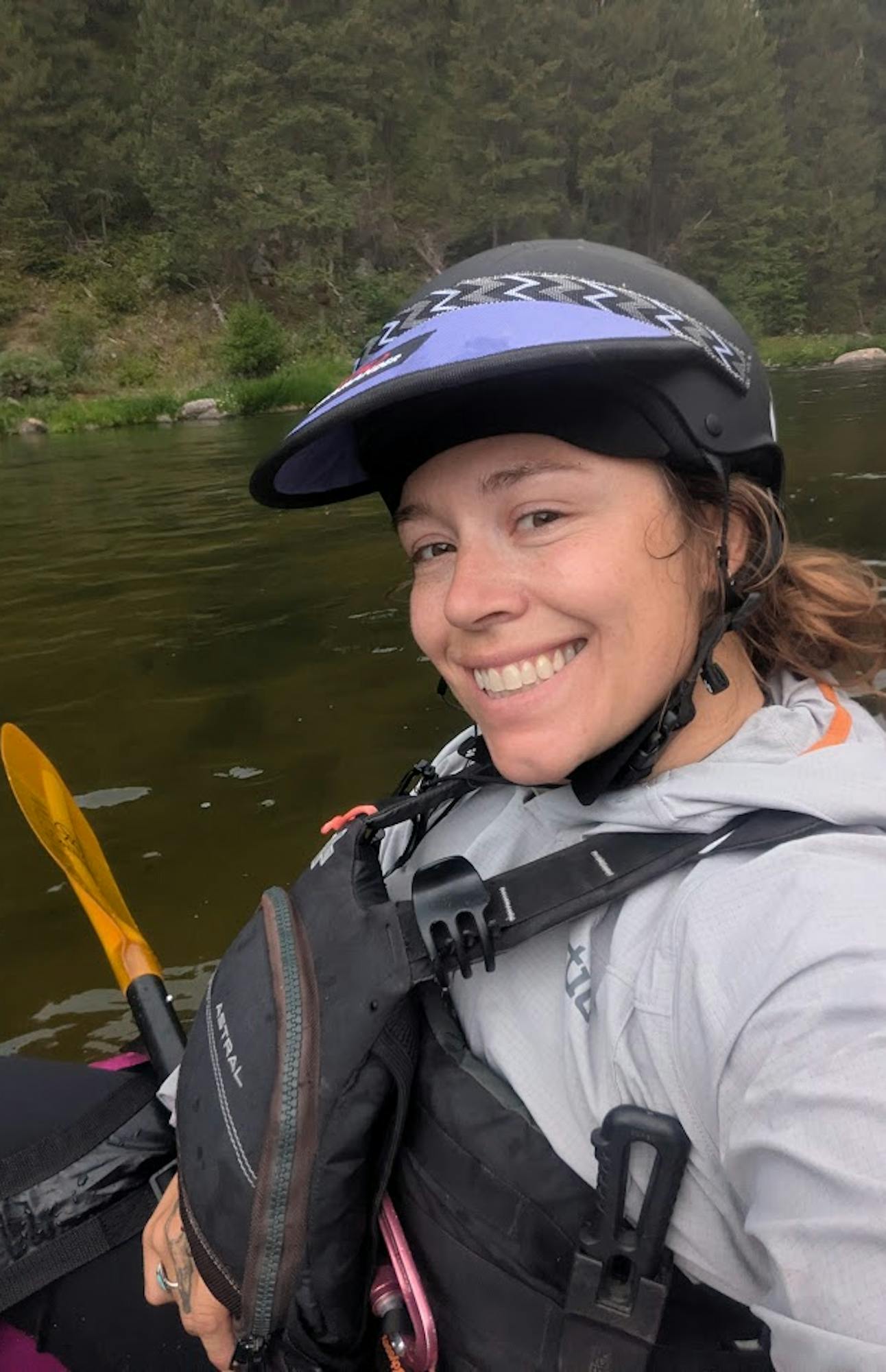Messa Rasmussen
Carried by the Current
Stio Local Messa finds confidence and quiet healing on a solo pack raft trip down Idaho's Payette River.
Since my first time on the Grand Canyon—when I crossed paths with a woman navigating the entire stretch solo—I’ve wanted to do an overnight trip alone on the river. It was January. She had a 14-foot boat and an easy confidence that left a lasting impression. I still remember her voice calling out into the canyon, saying how much she loved winter solitude. “I can hike all the hikes I want,” she said, and then disappeared downriver.
That moment stuck with me.
This summer, the window opened to do a solo overnight in my packraft. It was one of those last-minute decisions—“If I don’t do it now, I might not this season” kind of push. I didn’t launch until 7:30 p.m.—definitely late—but I knew if I didn’t follow through, I would be disappointed. The shuttle was arranged, and I’d meet a friend at the takeout the next day. Afterward, we’d head to an alpine lake with his kids. But for now, the lot was empty. No trailers. No vehicles lining the road like they usually do in summer. It felt like I’d stepped into the river’s off-hours.
The air was surprisingly cold for July. I was grateful for my neoprene pants I threw in at the last minute. Gray clouds hung low, threatening rain, so I pushed off quickly, hoping to reach camp before it began. The river felt still, watchful.
Wildlife appeared early. A pair of otters played on the far bank, balancing on a single rock before slipping beneath the surface as I drifted past. Ospreys circled overhead, scanning the water for fish. They’re common along the Payette but usually keep to the high trees. Here, they dipped lower, likely doing some fishing.
The river started gently—some Class II ripples to keep things interesting but nothing consequential. I paddled mostly in silence, keeping a consistent flow. About four miles downstream, I reached a sandbar that Mike and I had camped on just last month for our fifth anniversary. I dragged my pack raft onto shore, built a small fire to dry out my gear, and boiled water in the same tin cup I used back in my wilderness guiding days.
The camp felt quiet, grounded. The light faded slowly. For once, I didn’t reach for music or a podcast. I just sat with the fire, listening to the water and watching the trees. Their branches were draped with wolf lichen and old man’s beard. I don’t always sit well with my own thoughts, but out on the water, something shifts. The usual noise—the mental chatter—dissolves. I become more present. More at ease.
The next morning brought the biggest rapids of the trip. I’d chosen this stretch of river for two reasons: first, the familiarity. At most, it was a Class III and a favorite of mine. Second, the remoteness—it offered a kind of immersion I craved, away from the hum of roadside noise.
With all my gear loaded, the pack raft handled differently. Top-heavy. A little sluggish. At one point, I had to pull off and repack—redistributing the drybags to balance the boat. Pack rafts are single-chamber boats, but many models have built-in compartments for gear. The drybags that slide into the sides offer reassurance in case of a puncture, though the material is surprisingly tough for how light it is.
I’m still new to small crafts. Fourteen-foot boats are my comfort zone. But being on my home river has helped me get a feel for pack rafts—and for kayaking, too. This trip reminded me that these little boats have more power than I gave them credit for. There’s a lot you can do in a little craft to flirt with the current.
One thing I’ve always loved about rowing is the way the oars become an extension of your arms. With the paddle, it’s the same. As I grow more comfortable bracing against the water’s tension, I find my hips relax. My body begins to trust itself. The dream of becoming a more skilled kayaker doesn’t feel so far off anymore. These small crafts open up new options—remote rivers, like the ones in the Owyhees, that I never thought I could reach solo.
As the canyon narrows, the river deepens. The road reappears, and cars honk as they spot boaters down below. This is my favorite stretch. Beautiful, sculpted rapids form here—fun wave trains and “haystack” waves that rise and roll like stacked bales. I love approaching a horizon line, knowing a drop lies just beyond. Tunnel vision sets in. I lock onto the line I want to run. It’s pure presence. A flow state. A kind of peace I don’t find anywhere else.
I’ve never been great at traditional mindfulness. My thoughts race. My brain churns. But on the river, especially with the bilateral motion of paddling, I can think clearly—or not at all. I can move slowly without being still. And somehow, that’s enough.
The final rapid—Howard’s Plunge—is like the exclamation point at the end of the journey. A clean 12-foot drop into the reservoir, named after a man who once drove his car into the rapid. It’s not particularly difficult, but it’s beautiful. It drops you right into a reservoir below allowing you time to turn around and enjoy the view of the rapid you just finished.
I turned back and looked upstream at what I’d just run. It was a quiet, powerful moment.
This trip was more than just something I’ve always wanted to do. It was a reset. A chance to reconnect with the river after the recent loss of a friend—someone taken by water. There was grief in the current, but also comfort. Something quiet and beautiful. Out there, I processed pieces of the past few months that I hadn’t been able to untangle. It was like the final puzzle piece had finally landed in my hand.

